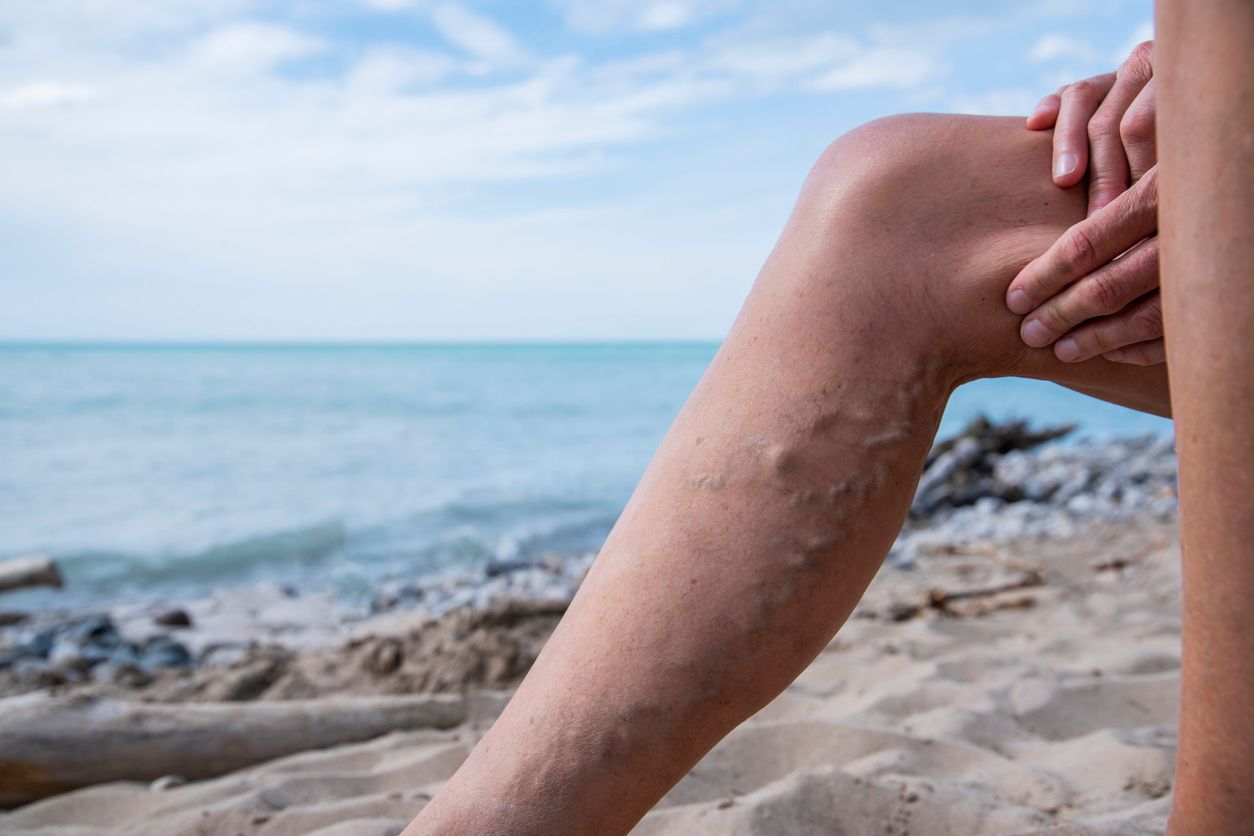Veins are blood vessels that are all over your body. They collect blood that doesn’t have a lot of oxygen in it and return it to your heart. The smaller of these veins, often called spider veins, aren’t actually veins at all. They’re damaged blood vessels that can are red and blue and appear on your face and legs — and they’re very common. In fact, 1 in 2 women and people assigned female at birth have them.
Spider veins are usually harmless (unless you have some other health conditions, in which case you should talk to your healthcare provider). But you might not like the way they look. Bulging, larger varicose veins are found mostly on the legs. Pregnancy, menopause, excess weight, standing or sitting too much, taking birth control pills, smoking and family history can all contribute to the development of unsightly — and potentially unhealthy — leg veins.
Most of the time, varicose veins are just a cosmetic concern, but if you have swollen, reddened or warm areas near your leg veins, it’s important to have them checked out by your healthcare provider. And if you think you might have a circulation problem, it’s important to consult your healthcare provider, too.
In the case of purely aesthetic concerns about your veins, you may be able to improve their look and possibly prevent new spider or varicose veins with these activities and exercises:
- Walk or jog regularly. Physical activity that uses your legs, such as brisk walking, builds leg and vein strength while also improving circulation.
- If you have a desk job, get up and move around every 30 minutes. If you’re on your feet all day, shift your weight from one leg to the other throughout the day.
- Eat low-salt and high-fiber foods to avoid swelling and constipation, which contribute to protruding veins.
- If you are not at a healthy weight, try to lose excess weight gradually and keep it off.
- Elevate your legs when resting.
- Use air cycling exercises to increase blood circulation in your legs. Lie on your back on the floor, with your hands under your rear end. Lift your legs and pedal as if riding a bicycle. Pedal in one direction, then reverse.
- Wear compression socks. Be sure to ask your healthcare provider if compression socks are a good idea for you, but compression socks can be of some help if you’re able to use them.


